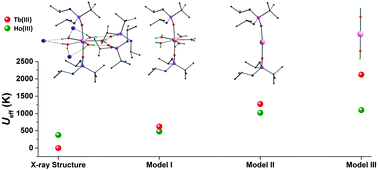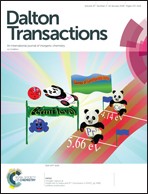Is a strong axial crystal-field the only essential condition for a large magnetic anisotropy barrier? The case of non-Kramers Ho(iii) versus Tb(iii )†
Abstract
A monometallic non-Kramers Ho(III) complex with a strong uniaxial ligand field displays a record high energy barrier of 355 K with hysteresis opening up to 4 K at a sweep rate of 0.027 T s−1, while the isomorphous, more anisotropic non-Kramers Tb(III) complex displays strong quantum tunnelling between the ground states. Ab initio calculations reveal that the presence of strong axial ligands and moderately weaker equatorial ligands is sufficient to quench the QTM between the ground pseudo doublets (mJ = ±8) in the case of Ho(III) complex, where the relaxation is found to proceed via the first excited state. However, the equatorial field disrupts the stabilization of ground pseudo doublets in Tb(III), inducing QTM and inhibiting SIM behaviour. Further insights into the decisive role played by the secondary coordination sphere and hydrogen-bonding in the SIM characteristics of these two non-Kramers ions were also gained. This combined experimental and computational approach highlights that although strong axiality holds the key for designing high temperature SIMs based on oblate non-Kramers ions, the strength of the equatorial ligand field also cannot be ignored.



 Please wait while we load your content...
Please wait while we load your content...